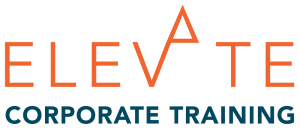Sales objections are a natural reality of buying and selling, which means they are unavoidable for even the best of sales presenters. Therefore, being an successful closer requires skills beyond presentation of product features and benefits. Strong closers must also be proficient in managing sales objections that are bound to come up in a significant percentage of selling efforts. So, you will need adequate sales training and practice in overcoming sales objections, to learn how to anticipate, uncover, and respond effectively to objections when they inevitably arise during sales presentations and closing.
What is a Sales Objection?
A sales objection is a prospective customer’s either hidden or expressed concern regarding the idea of purchasing a product or service during a salesperson’s attempt to sell it to the prospect. The salesperson’s responsibility is first to identify sales objections that may be impeding the prospect’s sense of readiness to move forward with purchasing. Then, the objective is to help the prospect become fully informed on all considerations of such factors, to alleviate concerns and help the prospect feel confident in going forward with the purchase.
Typically, sales objections are about price, uncertainty about the sufficiency of the solution a product offers to meet specific needs or desires, or missing a better offer from a vendor’s competitor, among others. Sometimes, prospects simply indicate that they have no real interest at all and dismiss sales reps regardless of how ideal their presentations are. When this happens, what the salesperson has experienced isn’t really a sales objection, but the unfortunate consequence of erroneously working a lead that is not viable.
Minimising the Potential for Sales Objections
The problem of finding poor leads in the hands of sales closers can be largely avoided by a combination of a well-functioning market targeting system that captures high-quality leads along with an efficient lead management program that accurately classifies lead statuses and reroutes weak leads onto a lead nurturing track, vs. processing them through the direct channel of the sales pipeline toward closing.
Good prospects who do express real objections to purchasing are normally merely lacking a complete understanding of the rationale for buying. They are, in effect, asking for more information. Once the concern is reduced to the point that is understood as being sufficiently less relevant than the benefits that the prospect needs/wants from the product, the prospect can feel free to move forward to become a new customer.
Uncovering Objections Early in the Pre-Closing Process
Inexperienced salespeople sometimes resort to arguing with prospective customers, or attempting to strong-arm them into relenting. Today’s savvy consumers are typically well aware of their power to simply walk away from a contentious sales situation, or avoid it by cancelling the transaction after the fact. So, wrangling to psychologically overpower prospects is a weak sales techniques that does not contribute well to building productive customer relationships, strong closing ratios, or a larger revenue base.
Pressuring prospects as a tactic to overcome objections is more likely to give the prospect the impression that your company doesn’t really care about their best interests and should not be trusted to behave better after you’ve locked them into a business contract. So, careful, consummately professional objection handling is paramount to brand reputation and to sustained success in selling.
Sales objections are frequently more challenging to overcome when they arise after an attempt has been made to close the sale. So, work to uncover all potential objections as early as possible during the sales presentation and throughout its parallel pre-closing process, before asking for the sale.
Use pre-closing questions to discover potential obstacles to closing. Insert these into your presentation prior to closing, while you have abundant opportunities to address and alleviate concerns. Ask questions such as:
- What do you think about [name a point that may seem unclear to the prospect]?
- Do you have any concerns about [name a potential point of concern]?
- Are there any reasons that this might not work for your needs?
- How well do you think this product/service could serve your needs?
- What do you think are the most significant benefits this would provide for you?
- Do you think the price makes sense for the benefits the product delivers?
- Do you think this offers you a strong value?

How to Handle Sales Objections
As for any particular business activity, managing sales objections is a process, which when properly performed, leads the individual to perform most efficiently in their role. In fact, these basic process makes sales closing the same across the entire business sector. Follow this little set of steps, to efficiently address objections. Note that the first four are merely the steps for active listening:
- Listen carefully to comprehend the specific objection.
- Repeat, or restate the prospect’s expressed concern.
- Ask one or more follow-up questions, to ensure your full understanding of the issue.
- Acknowledge the validity of the prospect’s concern.
- Explain to your prospect how you have resolved his or her specific objection.
Inc. magazine offers an important point on the usefulness of asking follow-up questions in response to sales objections, to demonstrate confidence, increase your credibility with your prospect, and to get to the heart of the objection so you can address it most straightforwardly.
Common Sales Objections and Responses
Most objections fall into a few general categories: concerns about price or budget, the sufficiency of the solution the product offers, making a spending decision or long-term contract commitment, or missing a better offer from a competitor. With sufficient basic sales training in handling customer objections, and experience in your industry and company, you will learn which objections to expect to hear most frequently, and you’ll polish your responses and manage objections with increasing efficiency. Here are some of the most common objections and suggestions for approaches to overcoming these:
Price and Budget Concerns
The price is too high.
This is the most frequent of all sales objections. Avoid futile debate about the reasonability of the pricing. Instead review the benefits and overall value that the product delivers. Avoid hastily reducing the price. Often, prospects who do intend to buy will still attempt to obtain a discount by negotiating for a lower price. Slashing prices is counterproductive to your company’s long-term sales goals. It increasingly diminishes the value of your products in the perception of your market, and negatively impacts revenues and margins.
Our budget is already set for this period.
Review the reasons why your prospect scheduled to meet with you. Talk about the comparative level of priority of having your product in service in use in their business now, and whether or not it would be worth reallocating some funds budgeted for lower priorities that perhaps can be deferred to the next budget cycle. Emphasise any benefits in increased efficiency, cost reductions, increased revenues, and other benefits to business performance.
We can’t afford it at this time.
Acknowledge that affordability can certainly be an issue. However, talk about the question of whether or not your product may be something that the prospect’s company actually can’t afford not to have. If the cost savings, revenue increases, and operating efficiency can justify the investment, it may make more sense financially for their company to go ahead with the purchase sooner rather than later.
If your prospect does not have the operating cash to support a purchase of your product, preserve the lead by staying in contact until they are in a better buying position at a later date.
Sufficiency of the Offered Solution
We don’t need your product.
It may be true that the prospect’s company does not actually need what your product offers at this time. However, before settling for that conclusion, ask the prospect about the department’s/company’s plans and its rate of progress, and listen to gain a greater understanding of why your product is currently viewed as a low priority. If it appears that the company does need the product, help the prospect appreciate what it would mean to have the solution now, and the likely degree of positive impact of it on their business performance.
Your product doesn’t have a function we need, or it’s incompatible with our systems.
Your company’s product may not always be the right fit. However, depending upon the age and degree of efficiency of the prospect’s current product, they may be better off actually replacing their existing one(s) with yours. It also may be worth it to them to adopt a way to make your product work within their system. Ask questions to assess how much value their existing product is actually delivering for them, before you determine that it’s time to write off the lead.
We’re satisfied with the product/service we’re using now.
Many busy people will choose to live with inconvenience than undergo the process for even modest change. Acknowledge that it’s great, and important, to be satisfied with the products and services you’re using. Still, consider the reason(s) why the prospect has agreed to meet with you regarding your product. Talk about the kinds of needs/challenges that may be relevant to the prospect, and determine whether or not there is anything that makes sense for you to try to help with, before moving on.
I’ve heard some negative things about your firm.
Don’t try to defend yourself or your company. Instead, just thank the prospect for the information, and promise to communicate it with your management. Mention the number of satisfied customers your company serves, or other impressive performance statistic, if appropriate. Then, move on to discuss the value of your product, its key features, exceptional benefits, and the multiple reasons why so many people have become such loyal customers and have referred so many friends and associates to your business.
Provide the prospect with an excellent experience in dealing with you, to turn around their impression and help them want to switch from sharing bad comments to making more positive comments about your company.
Making a Spending Decision
I don’t want to sign a contract.
If the prospect seems to have a desire to use your product, but is unwilling to commit to a time period required under your company’s standard contract, determine if a modified agreement can be reached, to allow a shorter term of commitment. If that’s not an option, agree that no one likes contracts, and explain to the prospect that the contract protects their interests, it clarifies their rights, it states exactly what has promised to them, and it explains the limits of their own commitment.
This is not something I can persuade upper management to buy.
Ask for the name and contact information for the actual decision-maker and their gatekeeper(s). Also, prepare in advance for the objections that your prospect expects you to encounter, and provide them with a solid set of facts to support the significant benefits your product will provide. Then, try to schedule with the decision-maker while you are still in the prospect’s office, for maximum referral leverage.
I’m too busy to deal with this right now.
Ask the prospect to reschedule a meeting with you for a later time. If a new date is not obtainable at this time, touch base routinely over coming periods, send the prospect some useful items, to continue being helpful and building rapport, and try again to reschedule when appropriate.
Better Offer from Competition
We use another supplier.
Because this prospect has already recognised their need for the kind of solution your company offers, there’s no need to convince them of that. Ask how well the product and service from their current vendor is going. Note issues that your product can resolve for them. Draw comparisons between features and benefits of the two competing products, and show the overall superior value of your offering. If the prospect is under contract with the current vendor, find out if you can offer a discount that would offset the cost of vacating their current contract.
I want to shop around.
Say that you appreciate the prospect thinking that way. Admit that a fully-informed customer is by far the best for your company. Explain that, fortunately, you can help the prospect save a lot of time and energy on comparisons. Explain that it’s your job to be fully familiar with what’s available in this particular class of product/service. Show the comparisons and what distinguishes your product and how it nets the best value for buyers.
We can buy it cheaper elsewhere.
Some prospects attempt to drive down the sale price by asserting that they’re aware of a competitor who offers the same thing at a lower price. First, know if it’s true that there are lower prices for a comparable product on the market. Talk about the difference between price and cost, and between price and value. Focus on the features and benefits that generate greater cost savings, efficiency increases, other measurable effects and make your product a greater value.
Undefined Objections
I want to think about it.
This is not an objection. It’s an introduction to an actual objection. So, ask the prospect what it is specifically that he or she wants to think about. After the prospect then states the actual objection, respond to it accordingly.
If the prospect is unclear about which specific questions he/she needs to consider, then suggest, “Why don’t you go ahead and think about it while I’m here with you, so I can answer any questions you may have while you’re thinking about it?” Tell the prospect that you will step out and give him/her time to think about it right now. Encourage him/her to take all the time needed, and assure them that you’ll just be in the next room, available to answer any questions they have while you’re still there to explain everything.
What is your cancellation policy?
Seasoned sales pros know that this innocuous-sounding question is much more. It goes to the prospect’s actual level of commitment, and is a red flag indicating that your sale will be at risk, after you’ve done all the work to finalise it. You’ll be better off without a sale, preserving the prospect relationship for possible later closing, than with putting yourself and the prospect through a disingenuous conversion process that is less than likely to hold up throughout the designated cancellation period.
So, address this question as an objection, instead of just answering that the cancellation period is three or seven days, for example. Understand the importance of not going forward into the formal agreement while the prospect is feeling comfortable with the notion of cancelling. Talk about the importance of being committed to the decision and of focusing on the great benefits of the product/service and all that it is going to mean to the prospect to have it.

Perspective on Answering Sales Objections
With properly targeted marketing and skillfully managed leads, the frequency of encounters with prospects that have not been properly qualified is reduced to a minimum. Nevertheless, sales objections will ever remain a predictable element of the sales process. Many are surmountable by applying insights gained from advanced sales training, roleplaying, and professional experience.
Yet, there are times to walk away. You’ll leave your contact information and cultivate lots of goodwill to leave with the prospect. You will have developed a new business acquaintance with someone who can later become a happy new customer, or who can at least go forward with reason to spread positive word of mouth about their experience with your company.
Remember that the route to strong sales success is pretty straightforward: Offer a product of good value, work good leads, deliver a good presentation, help prospects work through their objections, and reclose after answering objections. Think not in terms of a sense of defeat in not converting every single prospect, but in terms of bringing as many as possible onboard as new customers.
Overarching these fundamentals, keep the perspective expressed in the Harvard Business Review on the quality way to success in sales, “Instead of focusing solely on revenue, salespeople should concentrate more on helping buyers accomplish their goals.”
Elevate Corporate Training, Sydney, NSW
We help today’s business leaders and sales professionals strengthen their performance, through our state-of-the-art processes and tools for business management development, basic skills sales training, and advanced sales training, and recruitment training. Elevate’s team of management and sales experts provide formal business training as well as executive coaching for our clients in Sydney, greater New South Wales and throughout Australia.





